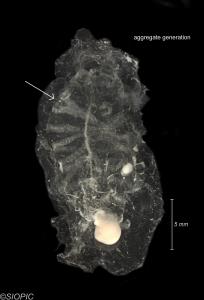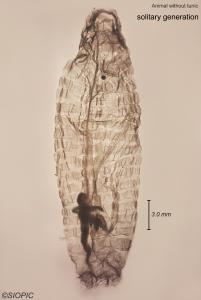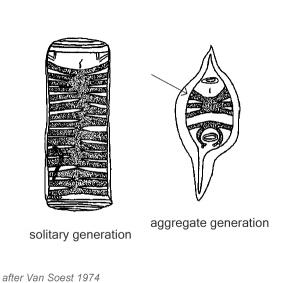Ritteriella retracta
The aggregate generation zooid possesses a thin, flacid tunic and body muscle bands 1-4 and 5-6 meet dorsally. Body muscle bands 1-2 are fused nearly all the way out to the lateral side compared to body muscle bands 3-4 that are fused dorsally for about 25% of their length. The solitary generation zooid also posesses a thin tunic and has 10-18 body muscle bands.
There are two other species of Ritteriella that overlap in distribution with R. retracta: R. picteti and R. amboinensis closely resemble R. retracta but vary in the number of muscle fibers within body muscle bands.
Bone, Q. (1998) The biology of pelagic tunicates. Oxford University Press, Oxford.
van Soest, R.W.M. (1974) A revision of the genera Salpa Forskal, 1775, Pegea Savigny, 1816, and Ritteriella Metcalf, 1919 (Tunicata, Thaliacea). Beaufortia 22: 153-191.
Wrobel, D. and Mills, C. (1998) Pacific Coast pelagic invertebrates: a guide to the common gelatinous animals. Sea Challengers, Monterey Bay Aquarium, Monterey, CA.
Yount, J.L. (1954) The taxonomy of the Salpidae (Tunicata) of the central Pacific Ocean. Pacific Science 8: 276-330.




